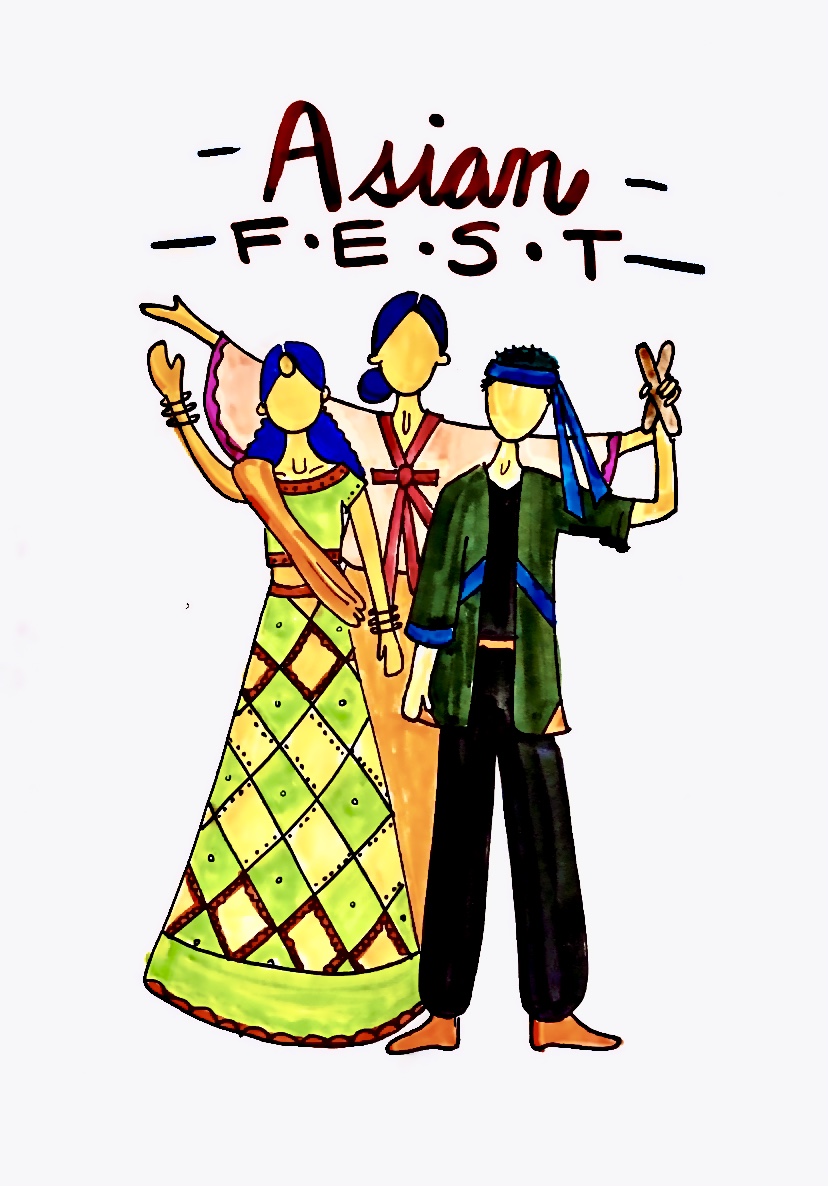It’s that time of the year again where you can find students fill the Campus Center after school multiple times a week to practice for the annual Asian Fest performance. But what exactly is Asian Fest? Ridgewood High School is a diverse school and a major component of this is the Asian culture. To celebrate the student body’s different cultural backgrounds, Helen Aslanides, a former teacher at RHS, introduced Asian Fest in the 1980s. Although small at first, the number of participants has grown rapidly over the years, and this year we have well over a 100 members!
To answer the previous question, Asian Fest is a performance based club that is mostly student led. Ms. Kirtane, a history teacher at RHS, oversees the whole event, but the students are largely in charge of all the constant planning, practicing, and teaching. Asian Fest is organized into five different countries: Korea, Japan, China, India, and the Philippines. Within each country are its individual performances. Korea consists of Korean Modern, Korean skit, Korean fan dance, taekwondo, kumdo, and for the first time ever this year, samulnori. Japan has its iconic fisherman dance and wadaiko. China performs the opening act, Chinese Lion Dance, along with Chinese Traditional and Chinese Yo-yo. India includes two different types of dances: Indian Traditional and Indian Modern. Last but not least, is the Philippines with Tinikling and its newest addition of Pandanggo sa ilaw.
There is a common misconception that students can only participate in a country’s performance that is of their own ethnic background. However, many students join to experience a new culture. “I admire how other people of different nationalities can join different performances even if they aren’t from that country. It’s a heartwarming feeling when I see people emerge themselves into a whole new culture and enjoy it” stated Julienne Maluenda, country leader of the Philippines. Likewise, country leader of Korea, Alex Kim also said, “Asian Fest is comprised of a large number of participants with diverse backgrounds, so everyone is welcomed with open arms no matter what their culture is. It’s definitely worth joining because it’s a place where every individual can learn more about those around them and become part of a family.” With fifteen different performances this year, students are able to explore other cultures, all while learning even more about their own.
The variety of performances lends itself to opportunities for student leadership. Asian Fest as a whole is supervised by the umbrella leaders who are constantly making sure that everything runs smoothly. Each country then has its own leaders, and they take care of everything within their country. Performance leaders are responsible for teaching participants and preparing them for the stage. “Being a country leader gives you a whole new perspective of how much work is put into the event”- Julienne Maluenda. Leaders are constantly working and planning behind the scenes; they devote a huge amount of their time to present the best possible show for the school.
Meetings for the leaders started early back in September. However, official practices for the participants began on the first week of December. Practices are held every week on Tuesdays and Thursdays. Starting later this month, Wednesday practices will soon be in effect and practices will become more rigorous. The week of the performance has practices every single day, sometimes ending even after 8:00 pm. Known as “Hell Week” among participants, nonstop practice is held in order to prep for the in-
school performance. Every single detail, like timing and transitions, are checked over by leaders constantly.
This year, Asian Fest comes earlier than usual. The in-school performance is pretty much all day Friday – February 28th. The lunch featuring food from all the different countries will also take place on that day. The benefit performance will be on the upcoming Sunday, March 1st, at 4pm. Unlike the in-school performance, the benefit includes a fashion show where traditional clothing from each country is worn by the leaders. General admission is $5 and student tickets are $3. The proceeds are donated to Doctors Without Borders so you can support a good cause and explore the various traditions of Asian culture!
Karis Han
Staff writer
Graphic: Nicole Kye

